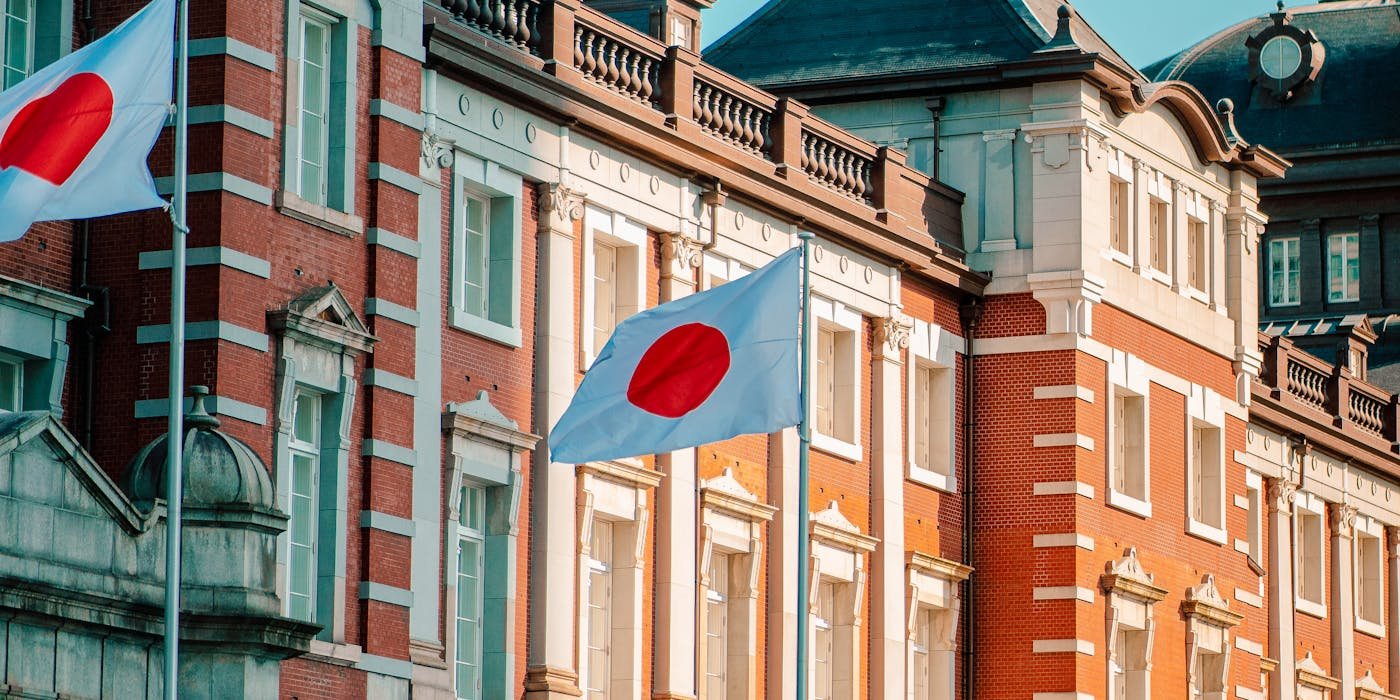Japan’s healthcare system stands as a beacon of innovation and support for its dedicated health workers. Renowned for its comprehensive coverage and a patient-centric approach, the Japanese health insurance model serves as an inspiration for countries around the world. In this article, we delve into the key aspects of Japan’s pioneering health coverage, shedding light on the lifeline it provides for the nation’s committed healthcare professionals.
Universal Health Coverage: A Cornerstone of Japan’s System
Japan’s commitment to providing universal health coverage sets the foundation for its pioneering healthcare system. The government ensures that all citizens have access to essential health services, fostering a sense of security among both the general population and healthcare workers. This commitment not only promotes overall well-being but also empowers health professionals to deliver quality care without the burden of financial constraints.
Key features of Japan’s Universal Health Coverage include:
Mandatory Health Insurance:
All Japanese residents are required to enrol in a health insurance plan, either through their employer, local government, or the national health insurance system for the self-employed and unemployed individuals.
Equal Access to Care:
UHC in Japan ensures that all citizens have equal access to healthcare services, regardless of their socioeconomic status. This is achieved through a system that pools risks and redistributes resources.
Cost-sharing Mechanism:
The cost of healthcare is shared between the government, employers, and individuals. This helps in ensuring that the financial burden on individuals is reasonable and that healthcare services remain accessible.
Regulated Fees:
The government regulates the fees charged by healthcare providers to maintain affordability. This includes fees for medical consultations, examinations, and treatments.

Comprehensive Benefits Package:
The benefits package under UHC in Japan is comprehensive, covering a wide range of medical services, including hospitalization, outpatient care, preventive services, and prescription drugs.
Preventive Care and Health Promotion:
Japan places a strong emphasis on preventive care and health promotion to reduce the overall burden of disease. Regular health check-ups and screenings are encouraged.
Efficient Healthcare Delivery:
Japan’s healthcare system emphasizes efficiency in service delivery. This is achieved through a well-organized network of healthcare providers and advanced health information systems.
Longevity and Health Outcomes:
Japan is known for its high life expectancy and positive health outcomes. The emphasis on preventive care, early detection, and prompt treatment contributes to the overall health of the population.
While Japan’s UHC system is widely praised, it is important to note that no healthcare system is without challenges. Japan faces demographic challenges with an ageing population, which puts pressure on healthcare resources. Additionally, there are ongoing discussions about potential reforms to address emerging issues and ensure the sustainability of the system in the face of evolving healthcare needs.
Social Health Insurance System: A Collective Effort
At the heart of Japan’s healthcare system is its social health insurance model. This system involves the active participation of both employers and employees, creating a collective responsibility for health coverage. The premiums are income-based, ensuring that individuals contribute according to their financial capacity. This collaborative approach not only funds the healthcare system but also reinforces a sense of community and shared responsibility for the well-being of all.
Here are some key points about Japan’s social health insurance system:
Universal Coverage:
Japan’s social health insurance system aims to provide universal coverage, ensuring that all citizens have access to necessary healthcare services.
Employer-Employee Partnership:
The system involves the active involvement of both employers and employees. Employers typically play a role in facilitating enrollment and managing the administrative aspects of insurance for their employees.
Premiums Based on Income:
The premiums individuals pay are income-based, meaning that people with higher incomes contribute more to the system. This progressive approach helps ensure that the financial burden is distributed equitably.
Collective Funding:
The premiums collected from both employers and employees contribute to a pool of funds used to finance the healthcare system. This collective funding mechanism helps spread the financial risk across the entire population.
Community and Shared Responsibility:
The social health insurance model fosters a sense of community and shared responsibility for health. Since everyone contributes to the system, there is a collective understanding that healthcare is a shared resource, and individuals are invested in the well-being of the entire community.
Preventive Care and Health Promotion:
With a focus on community well-being, the system encourages preventive care and health promotion. Regular health check-ups and screenings are often part of the overall approach to maintaining the health of the population.
Efficient Healthcare Delivery:
The collective funding ensures that the healthcare system has the necessary resources to provide efficient and timely services. This contributes to the overall effectiveness of the healthcare delivery system.
Government Oversight:
The Japanese government plays a significant role in overseeing and regulating the social health insurance system. This ensures that the system remains fair, accessible, and responsive to the evolving healthcare needs of the population.
Japan’s social health insurance system is characterized by its collaborative nature, involving both employers and employees in a collective effort to fund and support a comprehensive healthcare system. This approach reflects a commitment to universal coverage, equitable financing, and a sense of shared responsibility for the health and well-being of the entire community.
Holistic Healthcare: Beyond Treatment to Prevention
Japan’s healthcare philosophy extends beyond treating illnesses to prioritizing preventive measures. This approach is integral to the nation’s low healthcare costs and high life expectancy. By focusing on early detection and lifestyle choices, Japan empowers health workers to engage in proactive healthcare, reducing the strain on the system and enhancing the overall quality of life for its citizens.
Key aspects of Japan’s holistic healthcare philosophy include:
Emphasis on Prevention:
The Japanese healthcare system places a strong emphasis on preventing illnesses before they occur. This involves regular health check-ups, screenings, and awareness campaigns to detect potential health issues at an early stage.
Lifestyle Choices:
Health promotion and education are integral components of Japan’s healthcare strategy. Individuals are encouraged to adopt healthy lifestyle choices, including balanced nutrition, regular exercise, and stress management. By promoting a culture of wellness, Japan aims to prevent the development of chronic conditions associated with lifestyle factors.
Community Engagement:
The Japanese healthcare system involves the community in health-related activities. This may include community-based health initiatives, educational programs, and support networks that foster a sense of collective responsibility for well-being.
Proactive Healthcare Providers:
Health professionals in Japan are trained to take a proactive approach to healthcare. This involves not only treating existing illnesses but also working with patients to develop strategies for maintaining good health and preventing future health issues.
Early Detection:
Regular health check-ups and screenings are promoted to detect health issues at their early stages when they are more manageable and less costly to treat. This approach contributes to overall healthcare cost containment and improved health outcomes.
Patient Empowerment:
Individuals are empowered to take an active role in managing their health. By providing information and resources, the healthcare system encourages citizens to make informed decisions about their lifestyle and healthcare choices.
Overall, Japan’s holistic healthcare philosophy reflects a comprehensive understanding of health that extends beyond the absence of illness to encompass overall well-being. This preventative approach not only benefits individuals by promoting a healthier lifestyle but also contributes to the sustainability and efficiency of the healthcare system as a whole.

Innovative Technology Integration: Efficiency and Patient-Centric Care
Japan’s commitment to innovation is evident in its seamless integration of technology into healthcare services. Electronic health records, telemedicine, and advanced diagnostic tools enhance efficiency, allowing health workers to dedicate more time to patient care. This tech-savvy approach not only streamlines processes but also fosters a patient-centric environment, where the focus remains on individualized care and positive health outcomes.
Several key elements contribute to this tech-savvy approach:
Electronic Health Records (EHR):
The adoption of electronic health records is a cornerstone of Japan’s healthcare technology integration. EHRs facilitate seamless data management, enabling healthcare providers to access patient information quickly and accurately. This not only reduces the risk of errors but also enhances overall efficiency in healthcare delivery.
Telemedicine:
Japan has embraced telemedicine as a means of expanding healthcare access and improving convenience for both patients and healthcare providers. Telemedicine enables remote consultations, monitoring, and follow-ups, reducing the need for in-person visits. This approach is particularly valuable in rural areas or for patients with mobility constraints.
Advanced Diagnostic Tools:
The incorporation of advanced diagnostic tools, such as medical imaging technologies and diagnostic software, enhances the accuracy and speed of medical assessments. This not only aids in early detection of diseases but also supports timely and targeted treatment plans.
Efficiency Improvement:
Technology integration streamlines administrative processes, reducing paperwork and automating routine tasks. This efficiency improvement allows healthcare professionals to focus more on direct patient care and spend less time on administrative burdens.
Patient-Centric Environment:
The use of technology contributes to the creation of a patient-centric healthcare environment. By leveraging digital platforms, healthcare providers can offer personalized care plans, engage patients in their health management, and enhance communication between patients and healthcare professionals. This approach fosters a sense of empowerment and involvement in the decision-making process, ultimately leading to better health outcomes.
Data Security and Privacy Measures:
To ensure the success of technology integration in healthcare, Japan places a strong emphasis on data security and privacy. Robust measures are in place to protect patient information, fostering trust among both healthcare providers and the public.
Japan’s innovative technology integration in healthcare not only improves efficiency but also promotes a patient-centric approach, emphasizing individualized care and positive health outcomes. The seamless incorporation of electronic health records, telemedicine, advanced diagnostics, and efficiency measures reflects a forward-thinking and tech-savvy healthcare system.
Mental Health Support: Recognizing the Importance
Japan’s healthcare system acknowledges the significance of mental health, reflecting a progressive understanding of holistic well-being. Dedicated programs and services for mental health support are embedded in the healthcare infrastructure, ensuring that health workers, often facing immense pressures, have access to resources and assistance. This comprehensive approach reflects a commitment to the overall health of healthcare professionals, recognizing their pivotal role in the nation’s well-being.
Conclusion:
Japan’s pioneering health coverage stands as a testament to its unwavering commitment to the well-being of its citizens and healthcare workers. Through a universal, collective, and holistic approach, Japan has crafted a model that not only provides comprehensive coverage but also nurtures a healthcare system where professionals can thrive. As the world looks to improve healthcare systems, Japan’s innovative practices serve as a valuable source of inspiration, showcasing the transformative impact of prioritizing the health and resilience of both citizens and those dedicated to their care.


You need to be a part of a contet ffor one of the highest qualify bblogs on thee internet.
I am goiong to recommend thuis website!